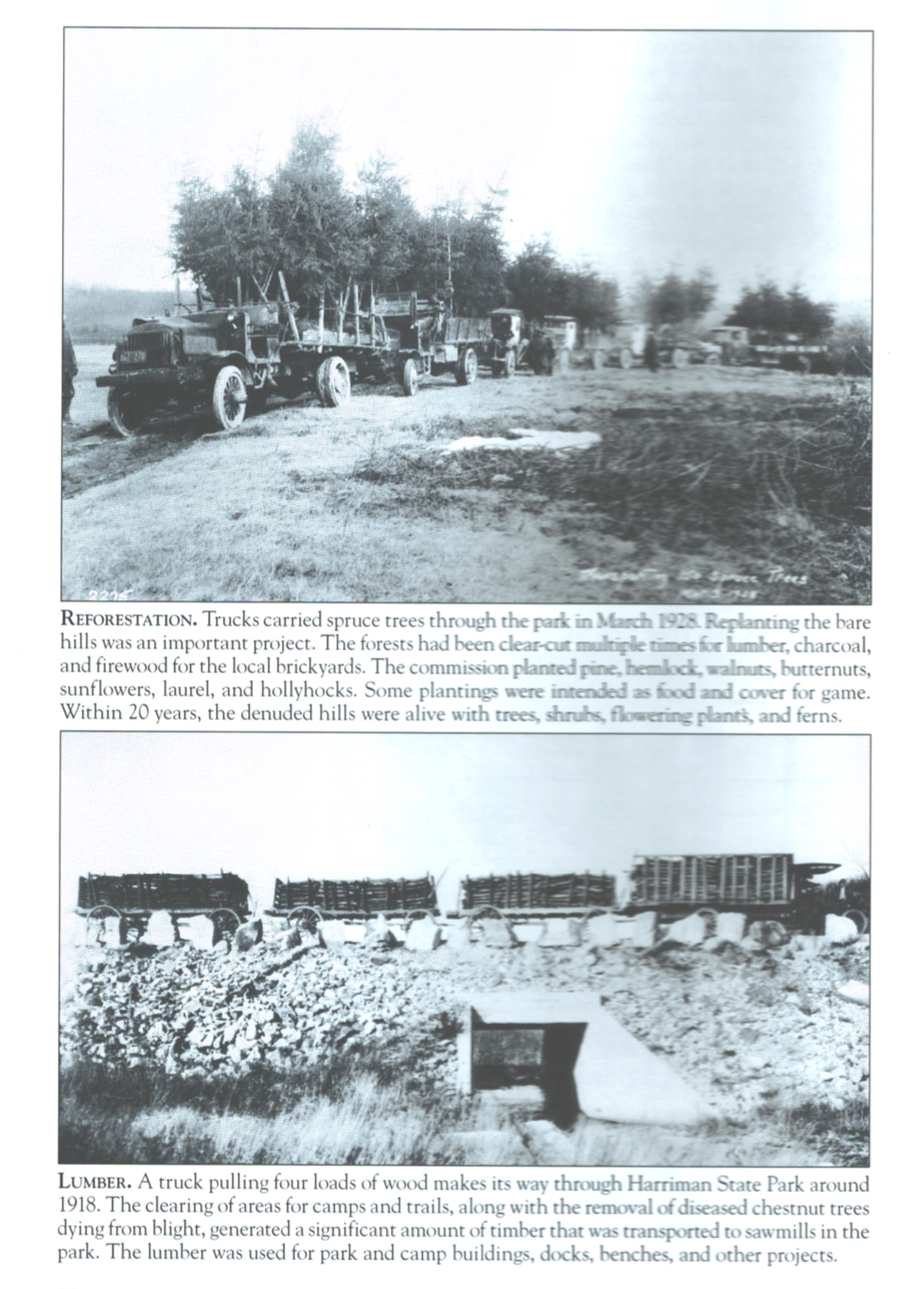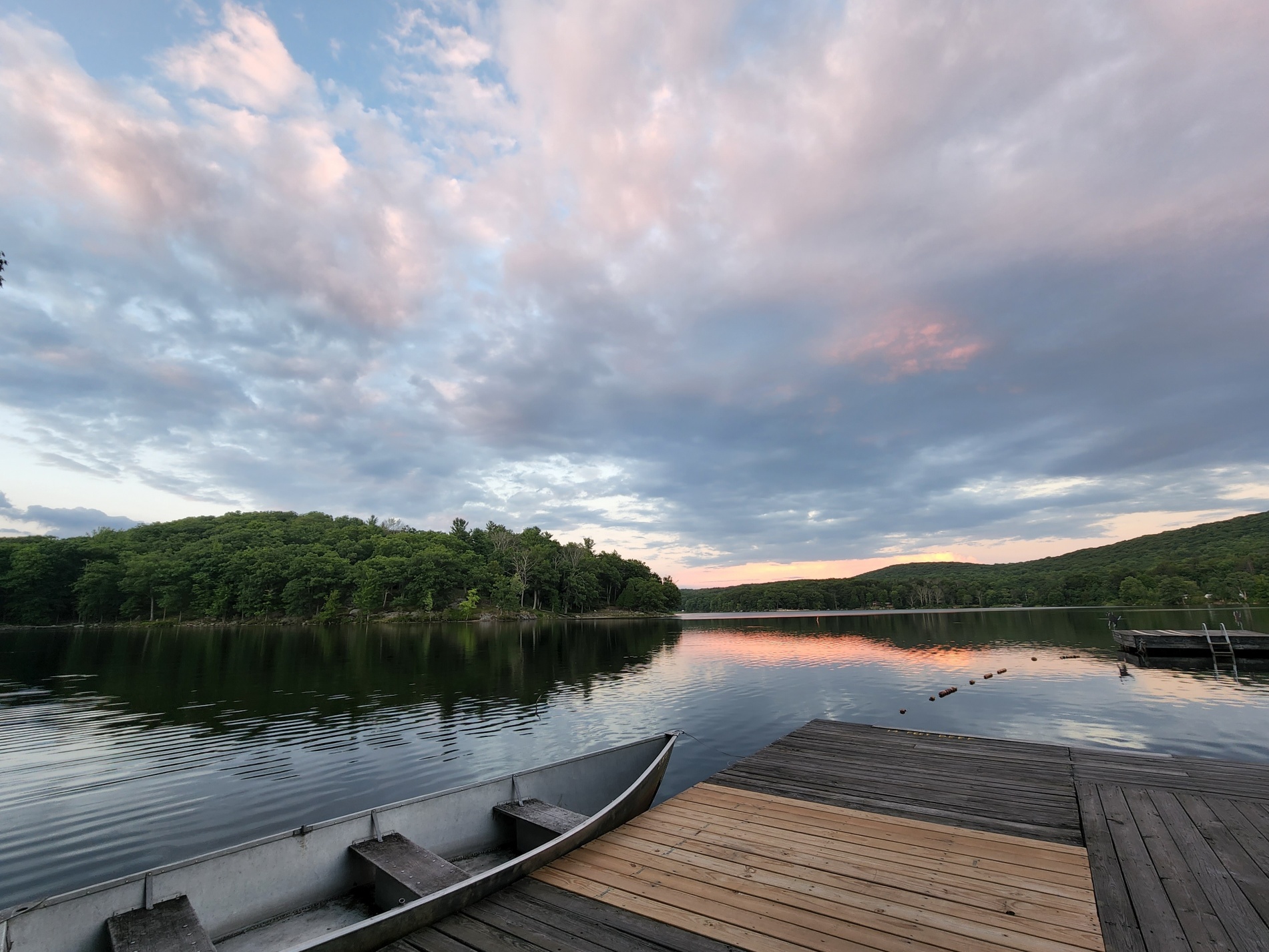This period was a busy one in the formation of Harriman State Park. As the attached photo reflects, the land was bare and in need of replanting. During this period the mountain laurel was purchased and transplanted in the Park. 112 Group Camps were in operation. Franklin Roosevelt, Governor of NYS, toured the Palisades parks of which he was very familiar. He said the parks would “relieve us of the dangers of overcrowding in the cities and the strain on our nervous systems.” (1)
On October 24, 1929, “Black Thursday”, the stock market fell by five hundred points. The onset of the Great Depression was at hand and the Palisades Interstate Park Commission would be severely impacted. The residents of Sandyfields, a mountain hamlet in a remote section of Harriman Park opposed construction of a dam as it would flood their properties. Most residents agreed to sell their lands but some held out as properties had been in their families since the 1700s. Other settlements including Baileytown, Johnsontown, Pine Meadows, Queensboro, Doodletown and others succumbed to the PIPC. (1)
The Depression caused the dayliners on the Hudson River to stop operation. Wages were cut across the board for Park employees. Raymond Torrey’s salary was cut in half from $3,000 to $1,500 per year. (1)
During this time, single women could not camp in the park. Married women could camp as long as they were accompanied by their husbands. (1)
The Park received needed assistance through Governor Roosevelt’s newly created Work Relief Program. Within weeks, 2,500 men were employed in the park system. They were paid $4.00 per day minus 50 cents for transportation. They took the train arriving at Bear Mountain. (1)
Back at Camp Nawakwa, in 1929 “a new sleeping cabin was erected (cabin 2) and the washrooms in the Main Cabin were added. The trap door and steep stairs leading to the basement were eliminated and a real staircase was constructed from what was previously the front sleeping room. The pack room was created with shelves and hooks for packs, camping and sports equipment, coats and hats, etc. The kitchen was enlarged. The purpose of the new sleeping cabin was to accommodate the girls’ bunks removed from the main lodge.” (2) The new Women’s Cabin was completely weather proofed. (3) The partition in cabin 1 were removed. Originally the cabin was partitioned into four sections, one of which had a stove. The intention was to provide a small place for a small group coming up during the winter without opening the main building. The idea never worked out. (4)
The January 1930 Trail Marker – “The Editor takes the liberty of again suggesting that we would all do well to get out on the trail much more frequently than we do. Perhaps we are getting too “camp minded”.
WHO SHOULD DO THE DISH WASHING
The question has arisen again as to the desirability of having paid help about camp on the week-ends. This question has been much discussed and very definite views both “Pro” and “Con” have been brought up. After considerable discussion, the Camp Committee was asked to investigate as to the practicality of securing such “help”.
Footnotes:
- Palisades 1000 Acres in 100 Years, Robert O. Binnewies (including attached photo)
- The Trail Marker – April 1929
- The Trail Marker – December 1929
- The Trail Marker – January 1930
- A History by Ira Ayres
Ellen King
Archivist


Leave a Reply
You must be logged in to post a comment.